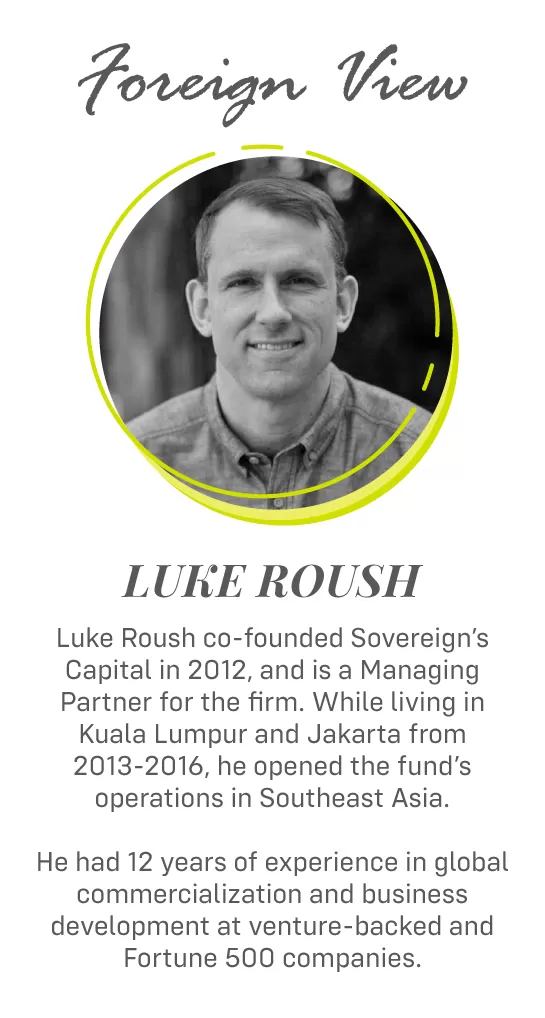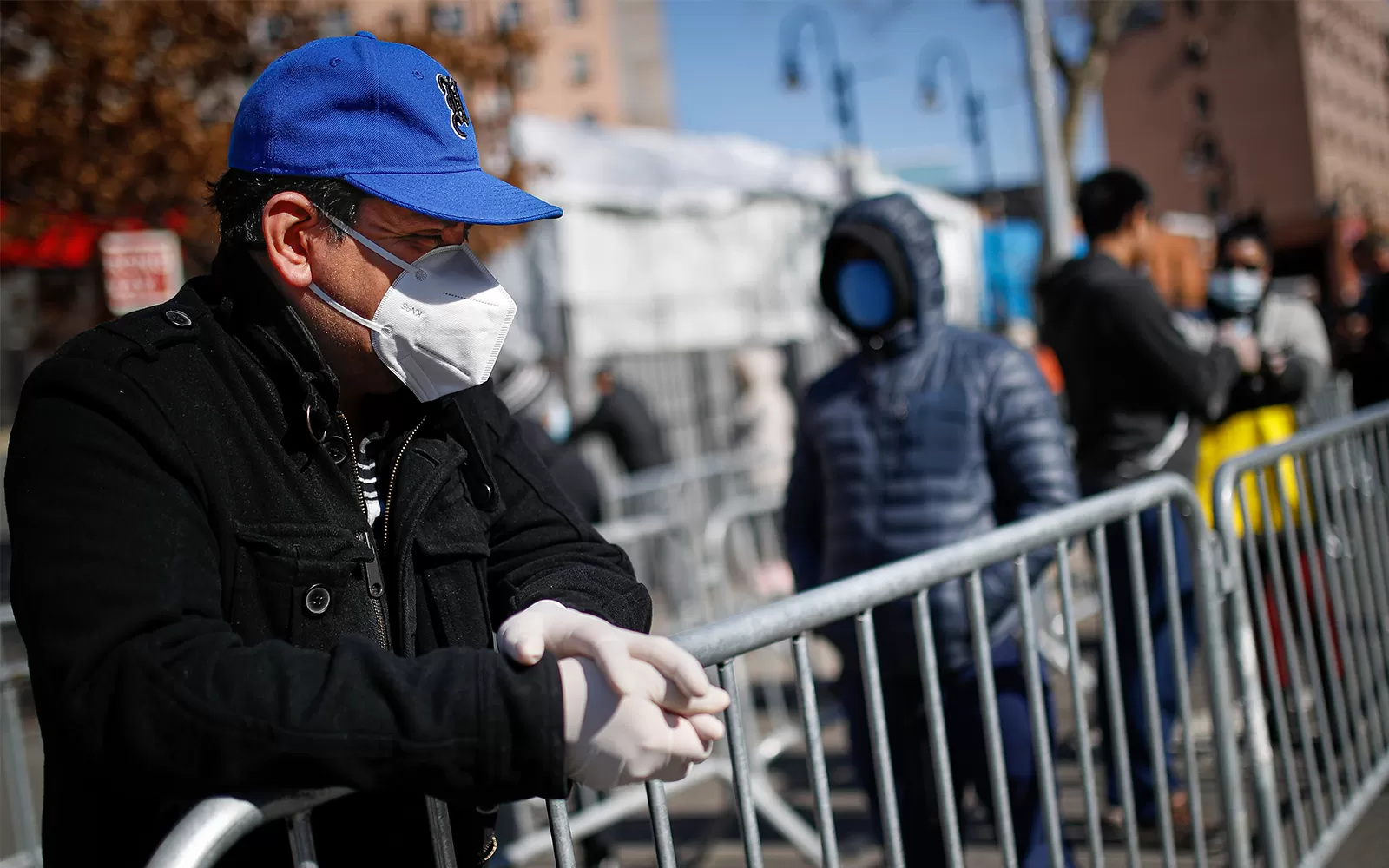 The time is now to urgently begin restarting our society. This is imperative to ensure mid- and long-term human flourishing. With the same level of urgency that we moved toward implementing restrictions, we as citizens must urgently push our nation towards a thoughtful economic restart.
The time is now to urgently begin restarting our society. This is imperative to ensure mid- and long-term human flourishing. With the same level of urgency that we moved toward implementing restrictions, we as citizens must urgently push our nation towards a thoughtful economic restart.
National leadership is the art of motivating a group of citizens (not subjects) to act toward achieving a common goal. Our leaders must weigh a multitude of inputs and make bold policy decisions to promote human flourishing in the days ahead. We must hold them accountable to this duty.
Looking Out the Front Windshield
It is not the right time for a retrospective on what should have been done differently in this crisis, but now is a critically important time for us to be focused on how our national posture must shift from being ‘on our heels’ to ‘leaning forward’ into what we do best as a nation. It’s important to note that my views are not framed primarily in economic outcomes.
Our decisions as a nation can’t be directed solely (or even mostly) at outcomes like GDP growth or stock prices. These metrics matter as they eventually impact human flourishing, but they are secondary to our leadership mandate to do the most good for the most people possible. Our primary mandate must remain focused on maximization of human flourishing, which includes both short- and long-term health and wellness outcomes.
Our Current Reality
The question now is whether we believe our healthcare system will actually be overrun in the near-term. With perhaps a few exceptions for short periods of time, we have not experienced a shortage of workers, ICU beds, or lifesaving equipment.
In fact, utilization rates have fallen dramatically in every healthcare system I have spoken with. Hospitals are going to be against the ropes financially due to their proactive freeing of capacity, as well as patient-driven cancellations.
Most systems are facing 25-50% Q2 revenue shortfalls, and this topline miss will translate to huge losses given the low margins and fixed overhead inherent within healthcare. A number of systems are beginning to furlough or lay off employees due to this reality. A governmental bailout will almost certainly be necessary.
Some are arguing that the surge of patients is still in the pipeline, though experts increasingly agree that is less likely with each passing day. Recent modeling adjustments have revealed forecasting challenges, as the estimates were revised from 100,000-240,000 deaths to 60,000 deaths within a few days’ time earlier this week. It’s hard to read this kind of data in linear form, so I encourage you to look at the U.S. logarithmic charts on infections and deaths available at this data source.
While hospitals await the COVID-19 ‘surge’, hundreds of thousands of patients awaiting elective procedures are wondering when their procedures can be rescheduled. The term ‘elective procedure’ may imply ‘optional’, but that is hardly the case. These procedures include cardiac catheterizations (diagnostic and interventional), heart surgeries, joint procedures & replacements, back & neck surgeries, colonoscopies, gastric endoscopies, and many interventional radiology procedures, to name a few.
In other words, we’re not talking about patients waiting to get a breast augmentation and tummy tuck. These are significant procedures that will have important diagnostic and therapeutic implications for patients.
Continuing to Quarantine = Deepening the Ditch
In the same way that lives depended on quick action a month ago to curtail mass gatherings where widespread infections might have otherwise occurred, we must have the same sense of urgency in moving back towards a functioning society. Every day that we remain in shutdown carries a cost in human flourishing – both death and other forms of suffering.
While death and suffering is not directly linked to the economy or employment statistics (17 million citizens filed for unemployment in the last three weeks, and more jobless claims are enroute), there are well documented indirect linkages tied to those economic statistics – problems like suicide, homicide, incidence of domestic violence, depression, child abuse, substance abuse, divorce, unwanted pregnancy, and other forms of abuse/illness which are correlated with unemployment and economic loss.
These issues are particularly prevalent among citizens who don’t have access to a healthy bank account, or a 401K reserve, or a stable nuclear and extended family, or resource networks which can provide support in a time of need. These problems must be treated with great concern, as they are second-order effects of our current public policy, which will show up and carry a decades-long tail of negative after-effects.
An argument I’ve heard recently is that “We can’t possibly put a price tag on a human life.” While the essence of this comment resonates, the reality is more nuanced. This is an imperfect illustration, but each year ~1,250,000 people die in automotive wrecks. Most of these are, presumably, avoidable.
Given the driver safety statistics, why do we let citizens <21 or >80 years old drive at all? Why don’t we limit the hours that can be driven by each person in each day, to reduce drowsy driving? Why don’t we forcibly retire old vehicles that are heavy and/or unsafe (as Singapore does)?
Why are people even allowed to drive routes where safer mass transportation options exist? Why do we allow the manufacturing of cars which drive >75 MPH? Why aren’t there full canopy airbags in every vehicle? Why isn’t a breathalyzer required to start a car at all times?
Why don’t we have more LifeFlight helicopters available to accelerate patients from serious car wrecks to the hospital? Why don’t we mandate Tesla-style autopilot for ALL cars, which would presumably be far less expensive than the $6,000+ for every man, woman, and child in the country (which we are spending via $2 trillion in stimulus funds)?
Some of these questions are, of course, silly. But the facts are that there is data about the cost of mandating safety in a $$’s-per-life equation. The metric of Quality Adjusted Life Years (QALY) is used extensively in healthcare, to help with the economic evaluation of medical interventions. Typical benchmarks within the U.S. range from $50,000-150,000 per QALY.
Based on $2 trillion in stimulus and an estimated 60,000 deaths, our current level of stimulus is suggesting just over $30 million per anticipated death in expenditures. This is not apples-to-apples, but the raw numbers are what they are and worth noticing. My main point is that there is a balance we must discern as a society between Short-Term Outcomes and Long-Term Outcomes. Safety and Affordability. Community Security vs. Individual Liberty.
There are anecdotes on this last tradeoff of Security vs. Liberty which can be drawn from the South Korean and Singaporean responses to COVID-19. Here in the U.S, we could absolutely save lives if we submitted to government-directed surveillance and a more militarized tact, but that approach would not be accepted by Western citizens as it was in Asia – A Brave New World is seared into our memories.
Thankfully, both political parties seem to grasp this, and understand the dangers of letting that surveillance genie out of the bottle. There are real tensions to be managed at a public policy level, and lives saved in the near-term isn’t the only metric that matters. Long-term flourishing and individual liberties matter. A lot.
A Draft Blueprint for Restarting Society
As citizens, it is our responsibility to agitate for restarting society. We must be able to engage in a meaningful dialogue that balances both near-term and longer-term human flourishing objectives. Should all of us immediately go back to life just as it was before?
No. Things are going to be different. Much of what we’ve implemented must continue in some modified form. COVID-19 case volumes are going to go up as we restart society, but hopefully with a tilt towards those less likely to require hospitalization.
Those more likely to require hospitalization if they become infected – the sick and/or elderly – should continue to self-quarantine until we have a better handle on local conditions through widespread testing, and a solid treatment protocol. As fellow citizens, we must find ways to love and care for these brothers and sisters as they remain isolated.
As the Gospel of Matthew (32:37-40) instructs us, other than loving God, our greatest commandment is to love our neighbor. The rest of the Gospel hangs on those two commandments, and that’s an important reminder as we head into this Easter weekend.
What we cannot do is say, “Well, until we have a vaccine, we’re just going to be living like this.” That is a recipe for utter disaster. The risks and rates of infection are widely varied in different countries, states, and communities. Blanket policies will paralyze our movement, and we must focus on a more rapid and nuanced return to functionality.
This restart could look like:
– Back to Work for Most – All citizens under the age of 65 and without an underlying condition will aim to return to work on Monday, April 20th. Depending on the nature of each work environment, rotational WFH and/or a 3rd shift may be necessary to reduce personnel density. Americans want to work, and will find a way to make things work.
– Continued Quarantine for Some – All workers over the age of 65 or with an underlying condition will remain in self-quarantine until conditions are deemed safe by local authorities – hopefully at some point in May. Since these are the patients more likely to end up in the hospital, appropriate discretion should be used with regard to continued social distancing.
– Health Checks and Cleaning Protocols – Everyone arriving in an office / factory / other group setting will be screened and use appropriate protective equipment while in public. If not already completed, cleaning protocols will be updated.
– Public Transit and Events – All those using public transit will wear protective equipment and undergo some form of low-friction screening. Depending on local conditions and other factors, state and local governments will determine what is sensible in the way of events and gatherings.
– Testing and Monitoring – Testing will be made available for anyone exhibiting symptoms, and case volumes will be monitored for any sign of meaningful expansion which could overwhelm a local healthcare system. Given measures 1) thru 5) above, the likelihood of an outbreak such as what occurred in China/Italy/NYC becomes near-zero. If facts on the ground evolve negatively, we adjust and proceed on a local or regional basis.
My hope and prayer is that, as citizens, we recognize the data that is unfolding and have the courage to quickly step back towards a functional economy along the lines of these draft thoughts. This will be an incredibly challenging journey, but we must quickly begin for the well-being of our fellow citizens, and the future of our nation.
America is a beacon of freedom and light for citizens all over the world, and now is a great time for us to step forward into that leadership.
“Disclaimer: The author takes full responsibility on the content of this opinion.”



